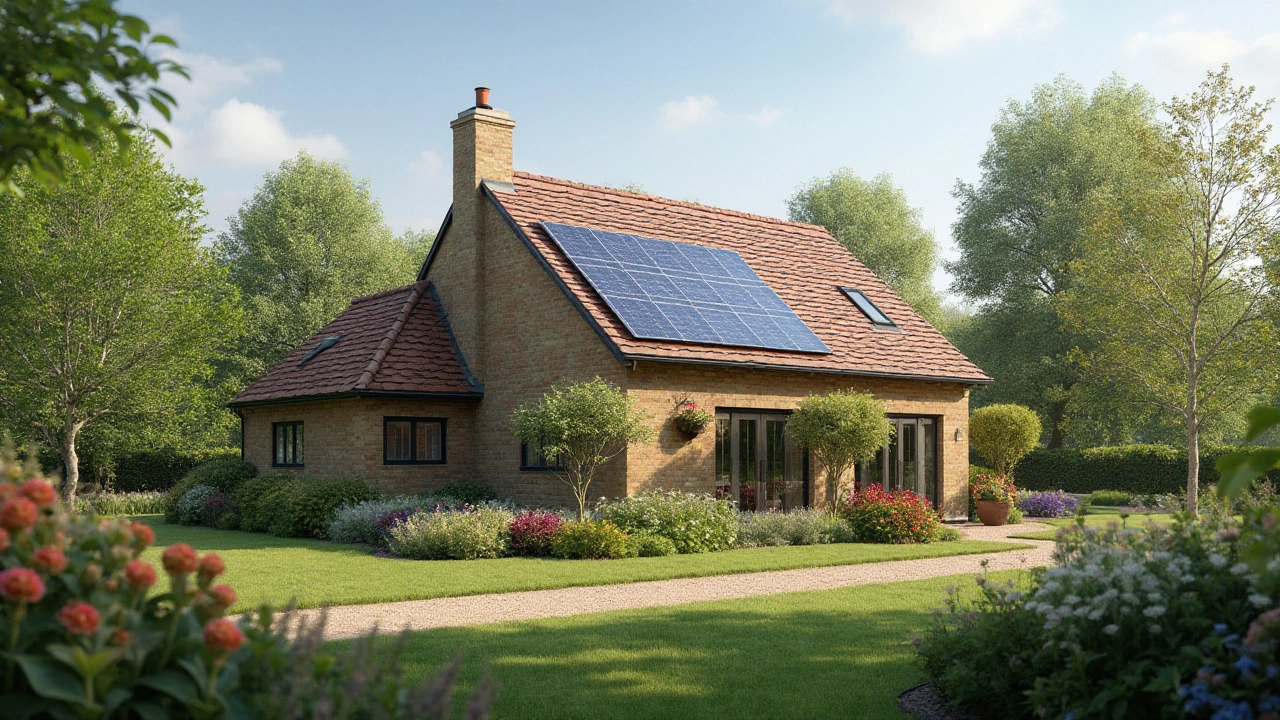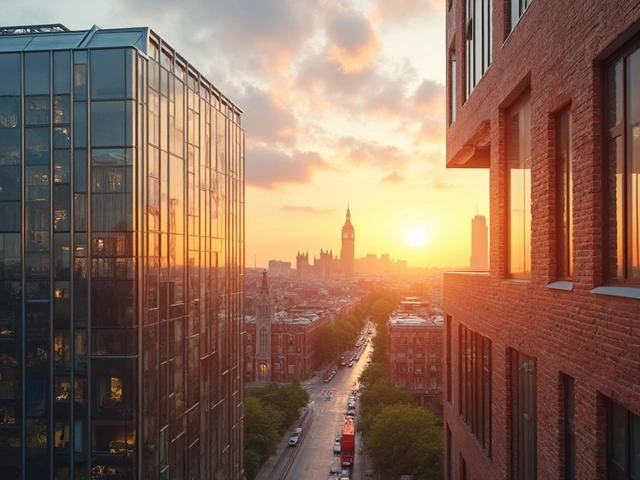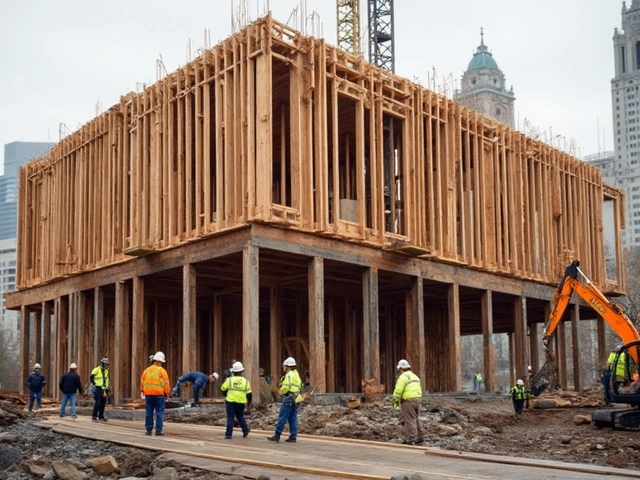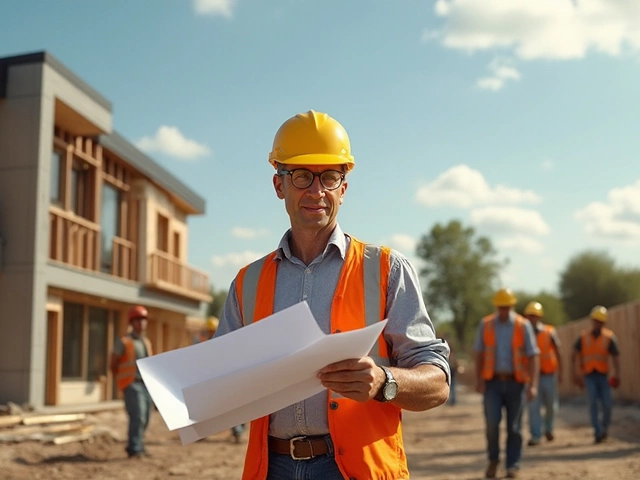When you walk into a glistening new home, it's easy to get caught up in the allure of shiny appliances and freshly painted walls. Yet, beneath that surface charm lies a crucial question: are new builds designed to stand the test of time? For years, there has been an ongoing debate about the durability of modern constructions. Homebuyers often wonder if the walls around them will weather storms, literal and figurative, over the years.
New builds are a curious blend of old traditions and cutting-edge innovations. While trends come and go, the core concern of durability remains pivotal. The strength of a dwelling is a tapestry woven from materials, workmanship, and even the ethos of sustainability. As technology advances, so too do our expectations of what a well-constructed home should entail.
Join us as we unravel the complexities surrounding new builds, exploring not just their weaknesses, but also the strides made in ensuring these homes not only look exquisite but also endure the decades.
- Building Materials and Their Impact
- Modern Construction Techniques
- Quality Control in New Builds
- Common Durability Issues
- The Role of Technology
- Sustainability and Longevity
Building Materials and Their Impact
When considering the longevity of new builds, one of the first elements to scrutinize is the choice of building materials. Materials form the backbone of any construction project. Imagine them as the very DNA of a home, determining not only its aesthetic appeal but also its resilience. Traditionally, materials such as brick, stone, and wood have been favored for their durability and timeless quality. These materials have stood the test of time, literally building civilizations. However, in today's rapidly evolving construction environment, new and advanced materials are taking center stage, promising both strength and sustainability.
Modern builders are increasingly opting for materials like reinforced concrete, steel, and engineered timber. Each of these materials brings unique properties to the table. For instance, reinforced concrete is cherished for its strength and ability to withstand natural disasters like earthquakes and hurricanes, providing a safety net for homes in seismic zones. Steel, on the other hand, offers flexibility and is less prone to warping, a common issue in traditional wood homes. It's interesting to note how construction quality has been significantly enhanced by such choices, ensuring homes last longer with minimal maintenance.
One may ask, why the shift towards new materials? It's not just about strength. Environmental concerns are also steering these choices. Builders are under increasing pressure to select materials that are eco-friendly. Engineered timber, for instance, is not only robust but also a renewable resource, aligning with the global shift towards sustainable building practices. According to the World Green Building Council, "The use of sustainable materials in construction can reduce carbon footprints by as much as 40%."
"A significant portion of a building’s environmental impact comes from the materials used," says renowned architect Jane McArthur. "Choosing sustainable options is no longer a luxury, but a necessity."
Moreover, innovation in material technology is paving the way for durability enhancements. Advanced composites and polymers are now being introduced into everyday construction. These materials are designed to withstand moisture, pests, and even fire, ideal for home durability. A glimpse into future constructions showcases materials that self-heal minor cracks and reduce maintenance costs significantly. The idea of less wear and tear over time could redefine the notion of housing longevity. Yet while new materials glitter with promise, traditional materials continue to be valued for specific applications.
But are new materials without their cons? Every material choice comes with its compromises. While many advanced materials promise durability, they often come at a higher cost and sometimes even limited availability. Builders must balance between innovation and practicality. Homeowners, too, have a say in the matter based on their financial capabilities and personal preferences. It's all about crafting a structure that meets evolving lifestyles while remaining rooted in quality and cost-effectiveness.
Therefore, when considering a new construction, whether you’re a homeowner or a developer, understanding the materials and their implications is crucial. Not only does this influence initial costs, but it also affects long-term maintenance and the home's longevity. Keeping pace with technological advancements and sustainable trends can lead to more informed choices, aligning quality with eco-friendliness, ensuring that new builds are not just fleeting architectural marvels but true testaments to time.
Modern Construction Techniques
The landscape of building homes has evolved tremendously over the years, primarily thanks to innovative modern construction techniques that improve not only efficiency but also the integrity and durability of new builds. Today's architects and builders employ methods that were unheard of a few decades ago, blending technology and traditional craftsmanship to create homes that are better suited for the demands of the current era. Despite the rapid pace of innovation, the central focus remains on the quality of construction, ensuring new builds are not only attractive but also resilient.
One of the most intriguing advancements is the use of prefabrication, where significant portions of the structure are assembled in a factory-controlled environment before being transported to the site for final assembly. This technique minimizes exposure to elements during construction, significantly reducing the risk of warping or other structural issues that could arise from unforeseen weather conditions. Furthermore, the precision and uniformity achieved in such environments are unparalleled, promoting construction quality that's consistent across every unit. It's a method that combines logistical prowess with innovative engineering, resulting in homes that are not only aesthetically pleasing but practically robust.
In an era where sustainability is paramount, there's a rising trend towards incorporating eco-friendly methods and materials that reduce the environmental impact without compromising on longevity. Builders are now increasingly opting for biodegradable materials, recycling wherever possible, and using advanced insulation technologies that conserve energy smartly. An interesting illustration of this trend is the net-zero home, which generates as much energy as it consumes through a combination of solar panels, efficient heating systems, and smart thermostats.
"The drive towards using sustainable construction techniques not only reduces the carbon footprint but also ensures that these homes are built to last the test of time," says Marcelo Dejello, a prominent architectural engineer.
Another revelation in modern construction is the employment of Building Information Modeling (BIM), a sophisticated computerized technique that produces a digital representation of the physical and functional characteristics of a place. By utilizing BIM, builders can foresee potential problems and make informed decisions before the actual construction commences. This leads to reduced rework, less waste, and ultimately, a faster completion time. The integration of technology in this manner revolutionizes conventional methods, streamlining operations, and creating an efficient system where housing longevity becomes a foreseen result rather than a hoped-for outcome.
With the global emphasis on reducing construction times while enhancing quality, 3D printing also emerges as a game changer. Though in its nascent stages for home construction, its potential cannot be ignored. The ability to print sections of homes which are then swiftly assembled on site reduces labor requirements and materially streamlines processes. As the technology matures, it's expected to further transform the industry.
Effectively employing modern construction techniques not only shapes the future of housing but also provides long-term benefits for homeowners. From the costs saved on supply chains through prefabrication to the utility savings in energy-efficient homes, the promise of a structurally sound and economically beneficial build makes new construction techniques an area ripe for continued research and growth.
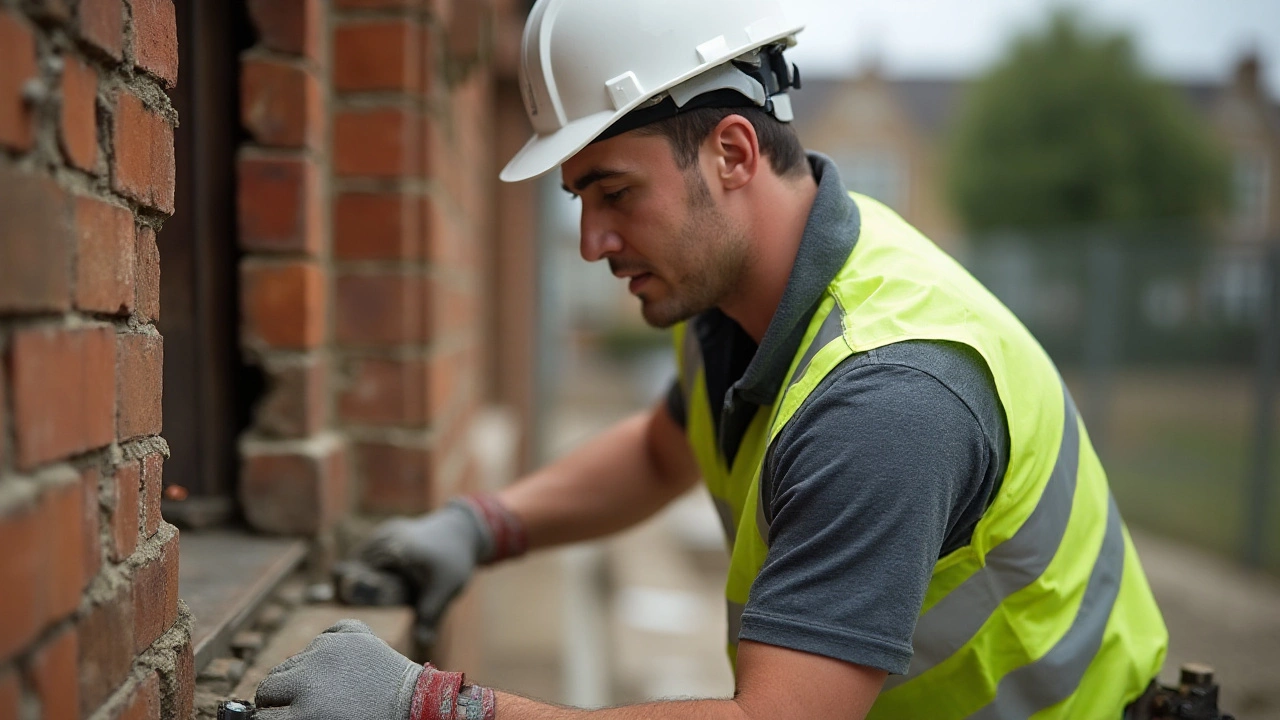
Quality Control in New Builds
In the realm of construction, quality control acts as the backbone ensuring that new builds aren't just aesthetically pleasing but also enduring. This process encompasses a series of checks and balances designed to identify and correct any potential flaws before they morph into bigger issues. It's not merely about passing inspections; it's about building homes that owners can trust will last for generations. One might wonder, how does quality control weave into the complex dance of constructing a new build? It's through a harmonized effort between architects, engineers, constructors, and often third-party inspectors who scrutinize every detail.
The heart of quality control lies in the materials used. Everything from bricks and mortar to plumbing fixtures comes under intense scrutiny. It's crucial to ensure these materials meet or surpass industry standards because their quality heavily dictates the durability of the home. Reputable builders don't take shortcuts; they leverage materials that have been tested rigorously, each batch scrutinized for consistency and reliability. One cannot underestimate the importance of this step because, as the saying goes, "a chain is only as strong as its weakest link."
Another pivotal aspect of quality control is the construction process itself. Here, every phase, from laying the foundation to the last coat of paint, is monitored closely. Builders employ quality control specialists who examine each stage to ensure compliance with the agreed specifications. This meticulous attention guarantees that structures are not only appealing but also constructed to withstand time's relentless test.
Inspections and Certifications
Quality control processes culminate in thorough inspections that homes must pass to achieve necessary certifications. These certifications aren't simply rubber stamps but symbols of trust and reliability. Inspections ensure that both materials and workmanship align with building codes and standards. According to the U.S. Department of Housing and Urban Development, housing durability parameters have been refined to include details as minute as the estimated longevity of roof tiles.
Consider that builders who produce consistently high-quality new builds often rely on independent inspections. Such third-party inspectors bring impartiality to the table, providing honest feedback that's invaluable for achieving high standards. The construction industry has seen a significant shift towards embracing these practices, recognizing that an upfront investment in quality control can save costs down the road by minimizing repair needs.
"Quality is never an accident; it is always the result of intelligent effort." — John Ruskin
Another key measure often utilized in quality control is feedback loops. Builders who emphasize quality solicit input from various traders during different construction phases. Such dialogue allows for continuous improvements and addresses any concerns immediately. It's a proactive approach that fosters an environment where quality is prioritized, ensuring that the final product represents the pinnacle of modern housing longevity.
Common Durability Issues
In the realm of new builds, certain durability concerns tend to crop up, sometimes leaving homeowners feeling a bit apprehensive about their investment. One common issue revolves around the quality of construction materials. While modern materials promise innovation, not all are tested for long-term resilience. Traditional bricks, for instance, offer a benchmark for durability, yet newer composites can sometimes fail under pressure, causing unexpected wear and tear over time. Imagine a family moving into their dream home only to grapple with wall fissures within months; this can be traced back to material choice and application inconsistencies.
Another area that often raises eyebrows is the plumbing and electrical frameworks. New builds occasionally suffer from hastily assembled systems, where corners are cut to save on costs. Plumbing systems, when poorly installed, might lead to water leaks which, if unnoticed, can wreak havoc on a house's structural integrity. Meanwhile, an improperly designed electrical layout can be a constant headache, creating inefficiencies or even hazards. This begs the question: are builders prioritizing speed over quality? A home’s bones, the plumbing and electric, must serve reliably for decades.
Homeowners also express concerns over insulation quality in new builds. Houses are expected to be warm sanctuaries, yet inadequate insulation can transform them into draughty spaces. Attics and basements often become culprits where miscalculations in insulating lead to energy inefficiency, spiking utility bills unexpectedly. Not only does this affect comfort, but it's a direct hit to sustainability, prompting some to rethink environmentally friendly ambitions in their housing choices. What's notable is the reliance on new insulative technologies that sometimes don't hold up under the scrutiny of time.
Recent data highlights that about 20% of new build owners report roof durability issues within the first five years. Roofs, the shields against nature’s whims, are sometimes crafted with materials unsuited for particular climates, leading to premature wear. Here the architectural design plays a role; a slick design might compromise on practicalities needed for robust durability.
"The integrity of a roof isn’t just about the shingles," remarks noted architect John M. DiFazio, "it’s a testament to the builder’s foresight in marrying design with functionality."
A less conspicuous but equally significant concern is the settling of the foundation. The dynamics of soil movement can cause shifts, leading to cracks and other structural issues. Many new builds go up swiftly, often without comprehensive site assessments. This oversight can result in unpleasant surprises for homeowners who find their homes shifting on unstable land.
When considering a new build, it's crucial to engage with builders about these common issues, ensuring that proper inspections are part of the building process. There is an undeniable charm to living in something brand new, but that charm can wear thin if not adequately supported by solid construction practices. By fostering clear dialogue and understanding the intricacies involved, buyers can bolster their confidence in their home's real potential for lasting durability.
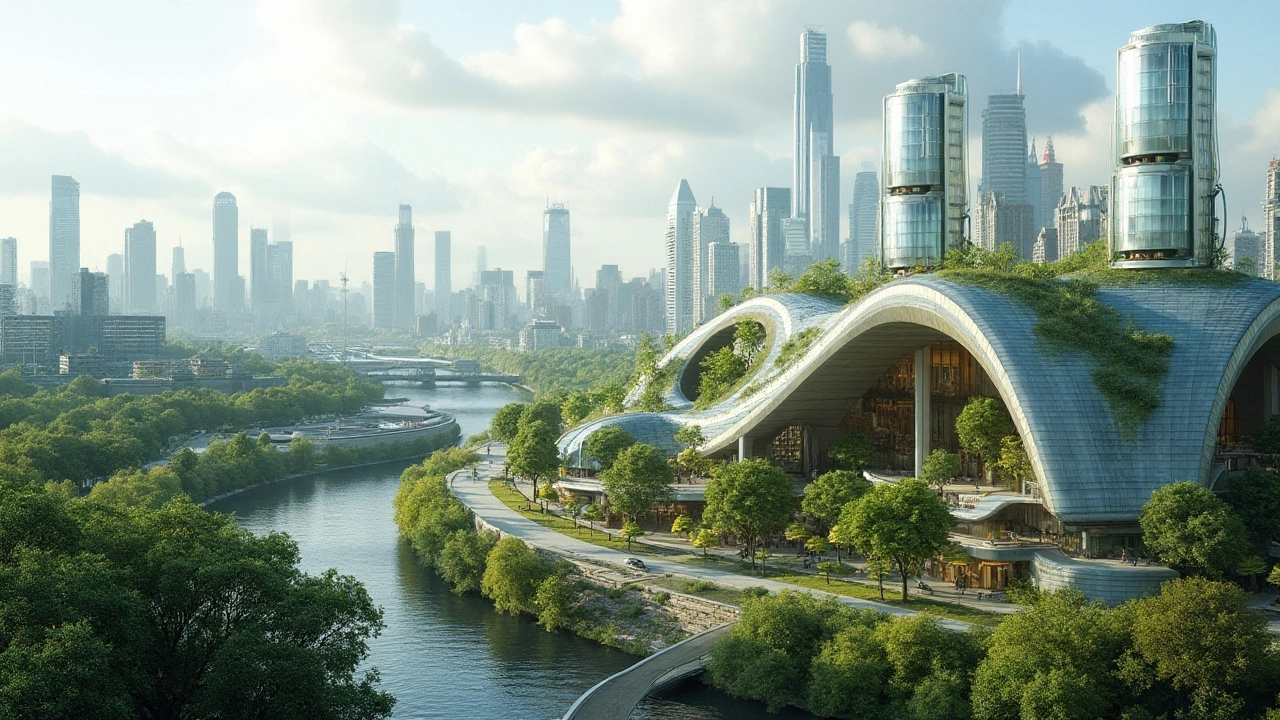
The Role of Technology
In the ever-evolving landscape of home construction, technology plays a pivotal role in shaping the durability and quality of new builds. Over the past few decades, advancements have redefined what it means to construct a long-lasting home. From smart home innovations to groundbreaking construction materials, technology is at the forefront of this transformation. Builders now have access to materials with enhanced properties—consider high-performance concrete that not only offers greater strength but also boasts improved sustainability credentials. These advancements allow homes to withstand the test of time and the elements better than ever before.
Equally impressive are the construction techniques that have emerged with the advent of technology. Prefabrication, for instance, has revolutionized the construction industry by ensuring precision and reducing human errors. By producing building components in a controlled factory setting, projects are completed with remarkable accuracy and speed. This method decreases waste and saves time and energy, crucial factors when aiming for durable constructions. Moreover, innovations like 3D printing offer exciting possibilities, allowing for customized designs previously unattainable through traditional building methods.
Technology isn't just about materials and techniques; it also changes how we monitor and maintain our homes. Smart technologies now allow homeowners to foresee potential maintenance issues before they become problematic. Sensors embedded in the structure can detect water leaks or fluctuations in humidity, helping prevent long-term damage. Consequently, home durability is enhanced simply by being forearmed with critical information about the property's health. As one industry expert aptly put it,
"The future of construction isn't just about building; it's about building smarter."
Even as these technologies advance, there remains the pivotal question of sustainability, which intertwines with durability. Builders increasingly recognize that to create durable homes, they must also embrace sustainable practices. Materials like reclaimed wood or recycled metal not only reduce the carbon footprint but also offer surprising longevity when correctly utilized. Some builders are turning to green building certifications not just as a trend, but as a testament to a home that promises years of reliable shelter. This marriage between technology and sustainability ensures that homes are built not just for today, but for generations to come.
Sustainability and Longevity
In today's ever-evolving world of construction, the buzzwords sustainability and longevity go hand in hand. The drive toward environmentally friendly practices has reshaped the way we envision our homes, making durability a cornerstone of eco-conscious architecture. The quest is not merely to build homes but to create living spaces that respect the planet, thus offering a promise of prolonged endurance. As eco-friendly materials become the norm, from bamboo flooring to recycled metal roofing, homeowners are finding that these sustainable choices often come with the added benefit of longevity. For instance, bamboo possesses a tensile strength rivaling that of steel, providing a robust framework for modern designs while its fast-growing nature makes it a renewable choice.
Moreover, the building sector has seen significant advancements in implementing green technologies. Solar panels now adorn rooftops from coast to coast, offering not just energy savings but also reducing a home's carbon footprint. These technologies ensure that homes remain self-sufficient even as resources fluctuate. Shifting our perspective slightly, the concept of passive housing deserves attention. Such homes use strategic design elements, like triple-glazed windows and super-insulated walls, to maintain consistent temperatures efficiently. A renowned architect once said, "A house should be built with the long view in mind; after all, it is meant to outlast us." This encapsulates the ethos of designing for the future by incorporating solutions that stand the test of time.
Beyond just materials and design, consumer attitudes have inspired a push for greater accountability in the industry. Buyers now demand transparency in sourcing and energy-efficient ratings, making it imperative for builders to not only meet expectations but exceed them. As building codes tighten globally with an emphasis on reducing environmental impact, homes constructed under these guidelines inevitably benefit from superior durability. It’s vital to mention that sustainability and longevity are not new concepts but are grounded in centuries of human ingenuity. Yet, today's iteration in the building sector seeks to harmonize traditional wisdom with future-forward thinking, ensuring the dream of owning a home doesn’t come at the planet’s expense. This synchronization of old and new presents a timely solution to the pressing challenges of our age, making new builds more reliable and environmentally sound than ever before.

